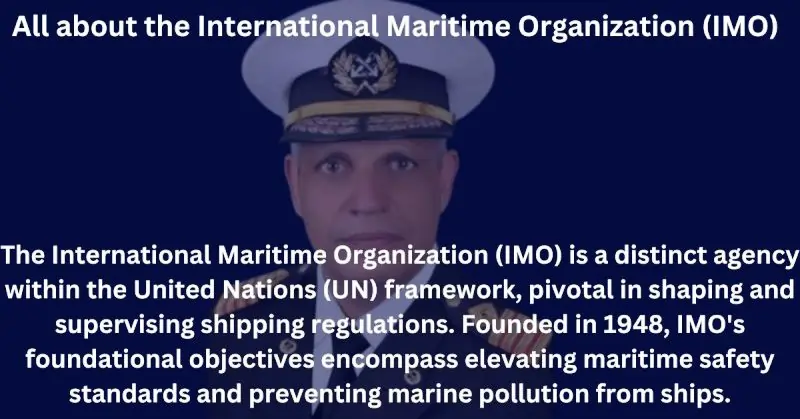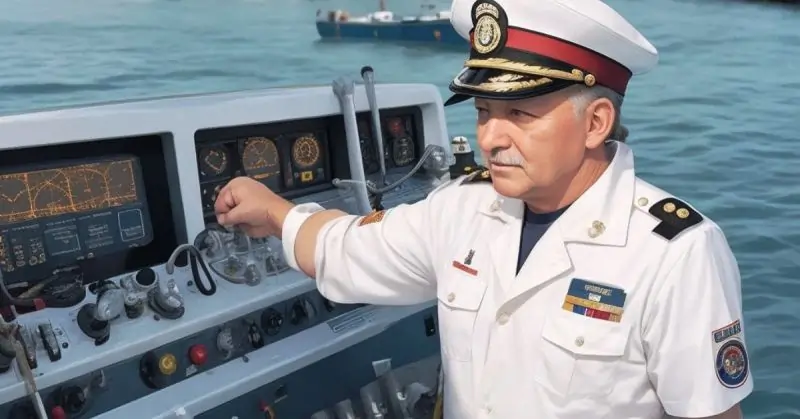Chief Engineer Responsibilities Under SOLAS
Navigating the vast seas requires a skilled crew and meticulous attention to safety and regulatory norms. At the helm of a ship’s technical operations stands the Chief Engineer, a figure of paramount importance, especially in the context of the International Convention for the Safety of Life at Sea (SOLAS). Let’s explore the multifaceted duties that this role encompasses.
Overseeing Machinery and Equipment
One primary duty is rigorously supervising the ship’s machinery and equipment. The Chief Engineer ensures regular maintenance, immediate repairs, and frequent testing to guarantee smooth sailing and minimize the risk of technical glitches that could compromise the ship’s journey.
Championing Safety
Safety isn’t a mere guideline; it’s a mantra for the Chief Engineer. They take charge of the ship’s safety management system, ensuring the vessel is fully equipped with the latest safety apparatus. Regular drills become routine under their watch, ensuring every crew member knows their role in potential emergencies.
Ready for Any Emergency
Unforeseen crises can strike anytime on the vast waters. The Chief Engineer not only equips himself with comprehensive knowledge of emergency response procedures but also stands prepared to lead and act swiftly during critical moments.
Protecting the Blue Expanse
The ocean’s health is pivotal. The Chief Engineer, fully aware of this, ensures the ship operates with a keen sense of environmental responsibility. This commitment means taking assertive measures against any form of Sea or air pollution.
Navigating Regulatory Waters
A plethora of regulations govern the maritime world. It falls upon the Chief Engineer to ensure unwavering compliance with these rules. This covers the gamut from SOLAS to the International Convention for the Prevention of Pollution from Ships (MARPOL) and other significant conventions.
To sum it up, the Chief Engineer is more than just a technical expert. They are the ship’s guardians, ensuring every voyage is safe, compliant, and environmentally conscious. As the maritime realm continues to evolve, the responsibilities and challenges facing the Chief Engineer will only grow, making their role ever more indispensable to every successful voyage.
Also, please read our blog on The best 10 tips on The best 10 tips on Duties and tasks of a marine engineer.
Understanding the Safety of Life at Sea (SOLAS) Convention
Established in the early 20th century, the Safety of Life at Sea (SOLAS) is a pivotal international maritime treaty. It lays down minimum standards for the safety of construction, equipment, and operation of ships. Initially brought into existence in 1914, this essential piece of maritime legislation has undergone multiple revisions, the latest being in 2016.
The primary objective behind SOLAS remains straightforward: to guarantee the safety of individuals and property on the sea and thwart marine pollution. Any ship that engages in international trade must adhere to SOLAS regulations. The breadth of topics SOLAS spans is extensive. It addresses life-saving appliances, fire protection measures, and essential navigation equipment.
Furthermore, SOLAS holds the distinction of being the maritime sector’s most vital treaty. Its framework and regulations aim to secure high safety levels by specifying minimum standards for ship construction, machinery, and equipment. Ships must adhere to these standards during their routine operations, ensuring they can face and handle emergencies.
The International Maritime Organization (IMO), a specialized agency of the United Nations, oversees SOLAS. This organization ensures that the SOLAS treaty gets the global recognition and enforcement it deserves. Given the dynamic nature of maritime activities and the challenges they present, the SOLAS convention undergoes periodic amendments. These changes ensure the treaty remains relevant, addressing contemporary challenges and setting safety benchmarks for the maritime industry.
In conclusion, SOLAS serves as the cornerstone of maritime safety regulations. SOLAS’s expansive reach and strict guidelines showcase its dedication to protecting lives, ensuring property safety, and conserving the marine ecosystem. The International Maritime Organization supports SOLAS, which propels the maritime sector towards heightened safety and sustainable practices.
All about the International Maritime Organization (IMO).

The International Maritime Organization (IMO) is a distinct agency within the United Nations (UN) framework, pivotal in shaping and supervising shipping regulations. Founded in 1948, IMO’s foundational objectives encompass elevating maritime safety standards and preventing marine pollution from ships.
Essential duties of the IMO encompass:
- We are formulating and ratifying international protocols and conventions focusing on maritime safety and curbing marine pollution.
- Establishing universal criteria for the shipping industry.
- Fostering collaboration among its member nations.
The IMO’s reach is vast, with its influence extending to more than 95% of the global merchant fleet. The organization boasts a membership comprising 170 nations and three associate members. London houses the IMO’s headquarters, where pivotal decisions materialize through Assembly and Council collaborations.
Beyond its standard supervisory and regulatory roles, the IMO takes proactive measures to support its member countries. The organization rolls out technical aid programs tailored to its members. Moreover, it delves into research and initiates development projects to enhance maritime safety while prioritizing environmental conservation.
In essence, the IMO stands as a beacon in the maritime world, guiding shipping activities towards safer and more environmentally conscious horizons. The organization paves the way for a sustainable and secure maritime future through its extensive network and a firm commitment to its goals.
Chief marine Engineer qualifying criteria

Stepping into the role of a Chief Marine Engineer involves a meticulous journey marked by stringent qualifying criteria. Here’s a detailed look at the prerequisites an individual must satisfy to earn this esteemed title:
Education and Training: At the foundation lies a marine engineering degree. Alternatively, combining specialized technical training and hands-on experience can also open the gateway to this career.
Professional Certification: Holding an authentic Marine Engineer Officer (MEO) Class 1 or Class 2 certificate stands paramount. This certification, awarded by a credible maritime administration or a globally acknowledged organization, attests to the engineer’s competence and proficiency.
Real-World Experience: Practical sea experience sharpens the skills of an aspiring Chief Marine Engineer. They should have clocked a minimum of 36 months at sea, serving in the capacity of a marine engineer officer. Notably, a significant chunk of this duration, at least 12 months, should be aboard vessels weighing more than 500 gross tons.
Regulatory Acumen: The maritime world functions under a vast canopy of regulations. A Chief Marine Engineer must master the nuances of both international and national marine engineering norms. Mastery over pivotal conventions like the International Convention for the Safety of Life at Sea (SOLAS) and the International Convention on Standards of Training, Certification, and Watchkeeping for Seafarers (STCW) is indispensable.
Physical Health: Maritime tasks demand robust health. Thus, securing a valid Medical Fitness Certificate from a reputed doctor or a certified medical practitioner remains essential. This certificate confirms that the Chief Marine Engineer is in prime health to undertake rigorous marine tasks.
These outlined criteria serve as a generalized roadmap. The specifics can shift based on regional regulations and a ship’s flag. As maritime standards evolve and technologies advance, the criteria to become a Chief Marine Engineer might also undergo revisions. However, these core qualifications will always remain central, ensuring that only the most dedicated, skilled, and knowledgeable professionals steer the engineering realm of marine vessels.
FAQ on “Chief Engineer Responsibilities Under SOLAS
Q: What primary responsibility does a Chief Engineer have under SOLAS?
A: The Chief Engineer ensures the ship’s machinery operates safely and meets SOLAS regulations.
Q: How does the Chief Engineer promote safety onboard?
A: The Chief Engineer fosters a culture of safety awareness among the crew.
Q: Why is ongoing training essential for Chief Engineers?
A: Continuous training keeps Chief Engineers updated with evolving SOLAS standards and maritime technologies.
Q: Do Chief Engineers play a role in environmental compliance?
A: Yes, Chief Engineers ensure the ship adheres to environmental mandates set by SOLAS.
Blog Conclusion
The Chief Engineer’s role aboard a vessel carries a weight of immense responsibility, particularly when viewed through the Safety of Life at Sea (SOLAS) Convention. This global standard underscores the importance of safety and security in maritime operations. The Chief Engineer, thus, becomes not just an engineer but a guardian of safety protocols, ensuring every mechanical and electrical aspect of the vessel meets SOLAS’s stringent standards.
From maintaining ship machinery to ensuring the ship’s systems function optimally, the Chief Engineer plays a pivotal role. They must ensure the ship’s crew can operate in a secure environment and passengers, if any, can trust their journey is in safe hands. They also collaborate closely with other department heads, ensuring every part of the vessel complies with international maritime safety laws.
Beyond the technical, the Chief Engineer embodies the spirit of SOLAS in their daily actions and decisions, prioritizing safety above all. They serve as a beacon of expertise, leading crises and regular operations teams—their responsibilities, though vast, anchor ships in the turbulent waters of maritime challenges.
In the vast ocean of maritime operations, SOLAS stands as a lighthouse, and with their unwavering commitment to safety, the Chief Engineer ensures ships navigate smoothly towards it.

